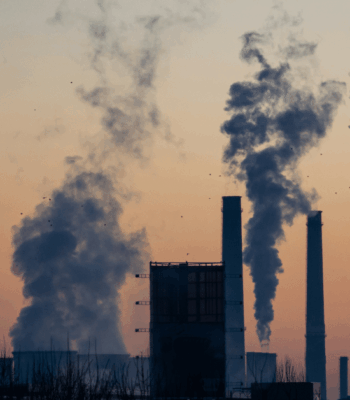Updated: October 15, 2025
Under California’s Senate Bill 253 (SB 253), companies with more than $1 billion in annual revenue that do business in California will be required to publicly disclose their greenhouse gas emissions.
While SB 253 is still facing legal challenges, the California Air Resources Board (CARB) is proceeding with implementation. Companies should be prepared to begin reporting as early as 2026, using 2025 emissions data, if and when the law takes effect.
In its most recent update on October 10, 2025, CARB released a draft Scope 1 and Scope 2 reporting template and accompanying memo outlining the data fields companies will need to complete once reporting begins, offering the clearest view yet of how emissions disclosures will be structured under SB 253.
This blog reflects the most up-to-date information available, including details from CARB’s draft template, to help companies understand what’s coming and how to prepare.
This is not voluntary guidance. SB 253 introduces enforceable, state-mandated reporting requirements, including third-party assurance and public disclosures. Here’s what you need to know to prepare.
Click here for our full breakdown of both SB 253 and SB 261.
Who needs to comply with California’s SB 253?
SB 253 applies broadly to large companies, not just those headquartered in California. If your business operates in the state and exceeds the revenue threshold, you’ll likely be required to report under this law.
Specifically, SB 253 applies to companies that meet both of the following criteria:
- Generate more than $1 billion in total global annual revenue
- Are considered to be doing business in California
While “doing business” is not explicitly defined in the bill, California’s Franchise Tax Board provides a working definition that includes:
- Has California sales exceeding $735,019
- Owns real or tangible property in California exceeding $73,502
- Pays compensation in California exceeding $73,502
These thresholds are adjusted annually for inflation, and CARB is expected to clarify how this definition will apply under SB 253 during the rulemaking process.
Key dates and deadlines for California’s SB 253
Reporting under SB 253 is set to begin in 2026, using emissions data collected during the 2025 calendar year. While CARB has not yet released specific disclosure due dates, and some implementation details may change through the rulemaking process, here is the most up-to-date timeline based on the legislation.
| Reporting year | Data year | Scope 1 & 2 reporting | Assurance (S1 & S2) | Scope 3 reporting | Assurance (S3) |
| 2026 | 2025* | ✅ Required | Limited assurance | ❌ Not required | ❌ Not required |
| 2027 | 2026 | ✅ Required | Limited assurance | ✅ Required | ❌ Not required |
| 2028 | 2027 | ✅ Required | Limited assurance | ✅ Required | ❌ Not required |
| 2029 | 2028 | ✅ Required | Limited assurance | ✅ Required | ❌ Not required |
| 2030 | 2029 | ✅ Required | Reasonable assurance | ✅ Required | Limited assurance |
*For the first reporting year (2026), companies may report Scope 1 and Scope 2 emissions from any fiscal year between 2023 and 2025, depending on what data is available. This gives companies more time to build reporting systems and fill data gaps without delaying compliance.
As of fall 2025, CARB has indicated that a draft rulemaking package is expected in Q4 2025, followed by a public comment period. Final regulations, including official reporting deadlines, disclosure formats, and third-party assurance requirements, are likely to be published in 2026.
While timing details may shift, companies should continue preparing as if the first disclosures will still be due in 2026, using 2025 emissions data.
What you should do to prepare for SB 253 compliance
We’ve started working with clients on SB 253 readiness, and the message is consistent: waiting for the final rules is not a sound strategy.
The best-prepared companies are already mobilizing internal teams, assessing data availability, and building a roadmap to disclosure. Based on those early experiences, here are three actions we recommend taking now to position your company for compliance by 2026.
1. Start internal coordination for your 2025 GHG inventory
Meeting the 2026 reporting deadline will require input from ESG, finance, legal, and operations. It starts with identifying who is responsible for driving the process forward.
What to do now:
- Assign a clear internal owner for SB 253 reporting and make sure that person understands what data will be needed and when
- Brief key stakeholders across teams so they understand what’s coming and how they’ll be involved
- Identify any systems, approvals, or resource gaps that could delay your 2025 inventory
If you’ve already completed a greenhouse gas inventory in the past, this process will likely look similar, you’ll just need to ensure the output meets SB 253’s reporting and format requirements.
The draft template includes fields for organizational boundaries, de minimis emissions, and emission-reduction disclosures from renewable energy. Reviewing these fields now can help identify where your current GHG inventory structure may need updates or additional data points.
If your team hasn’t completed a GHG inventory before and you’d like help with the process, reach out to our team to see how we can support.
2. Prepare for assurance of your emissions inventory
Limited assurance for Scope 1 and 2 emissions will be required starting with your 2026 disclosure. If your team has already completed third-party assurance for previous GHG inventories, the process under SB 253 will likely be similar. You’ll just need to ensure alignment with CARB’s final requirements.
The draft template includes a dedicated section for third-party verification details, signaling CARB’s intent to collect information about assurance providers and methodologies from the outset.
If this is your first time going through assurance, now is the time to get ready. Third-party verification often requires more rigor than internal reporting, and waiting until after your inventory is complete can lead to delays or rework.
To prepare, you should:
- Engage a third-party assurance provider early so you understand their requirements and timelines
- Ensure your emissions calculations follow a clear, consistent methodology aligned with the Greenhouse Gas Protocol
- Document all key assumptions, emissions factors, data sources, and any estimation techniques used
- Organize your data to support traceability. Your verifier will likely request audit trails back to utility bills, fuel records, and other source data
- Assign internal point people who can respond to assurance questions and manage documentation requests
The more prepared your documentation is upfront, the smoother the assurance process will be as reporting and verification become formalized under California law.
We have a 100% success rate for third-party verification of our clients’ Scope 1, 2, and 3 emissions. Connect with us to learn how we can support your team.
3. Evaluate your Scope 3 readiness
Scope 3 disclosures won’t be required until 2027, but given their complexity, we’re encouraging companies to start preparing now.
If your team is already calculating Scope 3 emissions, the process under SB 253 will likely look familiar. The key difference will be aligning your methodology with CARB’s final requirements once released, including category-level disclosures and documentation standards.
If you haven’t completed a full Scope 3 inventory yet, it’s a good time to begin. Scope 3 reporting often requires more time and internal coordination than teams expect, especially when supplier engagement is involved.
Steps you can take now:
- Review the 15 Scope 3 categories defined by the Greenhouse Gas Protocol and identify which are material for your business
- Talk to procurement and finance teams about existing supplier and spend data
- Start building a central repository for Scope 3 assumptions, data sources, and calculations, even if you’re using spend-based estimates at first
Starting now can help you avoid rushing in 2027, especially if CARB’s requirements increase the level of granularity needed over time.
What’s next for SB 253
While final implementation details such as submission procedures, assurance criteria, and official reporting timelines have not yet been finalized, the release of CARB’s draft Scope 1 and Scope 2 reporting template provides the clearest picture yet of what companies will need to disclose under SB 253.
The template and accompanying memo are open for public comment through October 27, 2025. If you would like to submit comments on the draft template, you can email them to climatedisclosure@arb.ca.gov.
CARB has indicated that this full package, expected later in 2025, will formalize submission procedures, timelines, and assurance requirements ahead of the first reporting year.
Companies should begin preparing their Scope 1 and Scope 2 greenhouse gas inventory using 2025 data while staying up to date on the latest guidance from CARB. The draft reporting template can serve as a practical reference point to assess data completeness, boundary definitions, and assurance documentation before formal reporting begins.
We’re closely tracking the rulemaking process and will share key updates as they become available. If your team needs help interpreting the law, preparing your emissions inventory, or building a reporting plan, we’re here to support you. Learn more about our California regulation services here.


